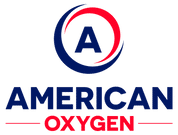Others
Flying Guidelines Using Portable Oxygen Concentrator
While the Air Carrier Access Act commands to accommodate passengers with disabilities, there’s absolutely no regulation requiring an airline to provide medical oxygen through flights. Artificial oxygen is considered a hazardous substance, and several airlines won’t permit passengers to take it on an aircraft. Some airlines offer supplemental medical oxygen, but many don’t, and usually do charge a commission for oxygen services.
But, these documents describe the prerequisites for POCs and spell out which oxygen concentrators may and might not need from passengers who want supplemental medical oxygen throughout their flights.
If you’re flying globally, you might want to obey numerous countries’ collections of regulations. Get in touch with your airline the moment you reserve your ticket to make sure to know all of the processes you need to follow.
Is my portable oxygen concentrator contained in the enlarged use of PEDs? No. Using portable oxygen concentrators must meet the requirements contained in:
- Federal Aviation Administration Advisory Circular No 120-95A.
- Special Federal Aviation Regulations 106, Use of Certain Portable Oxygen Concentrator Devices Onboard Aircraft.

Approved Portable Oxygen Concentrators
The FAA now requires producers to tag new versions of POCs that comply with FAA requirements contained in AC No 120-95A. This tag may be searched by airline employees to ascertain whether the POC is usable on the aircraft.
If your POC is old and doesn’t have a tag, don’t worry. Airlines may use the list printed in Special Federal Aviation Regulation (SFAR) 106 to verify your POC approval. These POC versions don’t require an FAA conformance tag: AirSep FreeStyle, AirSep LifeStyle, AirSep Focus, AirSep FreeStyle 5, Delphi RS–00400, DeVilbiss Healthcare iGo, Inogen One, Inogen One G2, Inogen One G3, Inova Labs LifeChoice, Inova Labs LifeChoice Activox, International Biophysics LifeChoice, Invacare XPO2, Invacare Solo2, Oxlife Independence Oxygen Concentrator, Oxus RS– 00400, Precision Medical EasyPulse, Respironics EverGo, Respironics SimplyGo, SeQual Eclipse and SeQual SAROS Portable Oxygen Concentrator.
Example Of Requiered POC Tag

Taking Your POC On The Plane
FAA regulations don’t request you to inform your air carrier about your POC. Nevertheless, most of them require you to notify at least 48 hours ahead of your flight.
The FAA no longer needs a doctor’s note for passengers traveling with their POCs. However, you should take into account that few air carriers:
- May ask you to supply a doctor’s or physician’s letterhead note or complete a form.
- Demonstrate your capacity to react to your POC’s alarms.
If required, the doctor’s statement should include the following advice:
- A report about your capacity to view, hear, and react to the warning signs in your POC that can be commonly flashing lights and audible alerts. You ought to have the ability to grasp the warning alerts and react to them with no assistance.
- A description of your oxygen demands. Do you require medical oxygen throughout the whole trip, or only under specific conditions?
- A statement describing the most oxygen flow speed you need while the aircraft is in flight.
Passengers utilizing POCs might not sit in exit rows, nor can their POCs block yet another passenger’s access to chairs or into the plane’s aisles. Some airlines are more specific, like Southwest, and need POC users to sit down at a window seat.
Powering Your Portable Oxygen Concentrator
Air carriers aren’t required to allow you to plug your POC to the plane’s electrical system. Nearly all U.S. Air Carriers will demand that you get enough batteries to power your POC for 150 percent of flight period. Others will require that you have sufficient charge to power your POC for flight period and three hours.
Contact your airline to confirm the length of your flight.
You should carefully pack extra batteries on your carry-on bag. You have to make sure that the electric contacts on the batteries are not in touch with different things in your carry-on bag.
Your POC is a medical device. While they need to get screened by TSA employees, they won’t count against the carry-on luggage allowance.
Renting Portable Oxygen Concentrators
If your POC isn’t FAA-approved and doesn’t tolerate an FAA compliance tag, you can always rent a POC to utilize in-flight.
Last thing
Early notify your air carrier that you intend to bring a POC with you. Make sure your physician writes the required statement, as some airlines have particularly restrictive rules. Include details such as:
- Letterhead doctor’s note.
- Flight length (for potential delays).
- Airline specific forms.
Planning in Progress is imperative to traveling using a POC.

 Español
Español
